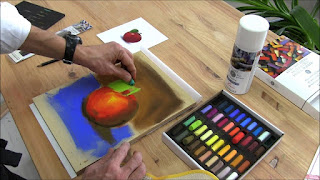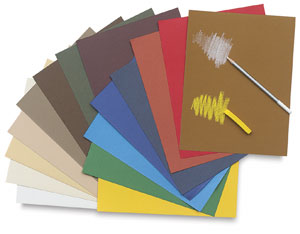We all might have attended Painting with Pastels classes during our schooling. Have you ever wondered how it is done with such perfection? Let's read ahead to know more about soft pastel wall art.
Painting with pastels
is one of the best ways to start your painting passion, as pastels are
accessible to everyone. Once you own a box full of pastels, all you
need is the techniques to use them. However, the maximum you will learn
is while actually drawing. Furthermore, we will be discussing Top 6
tips to avoid common mistakes while Painting with Pastels.
1. Choosing the Surface Colour:
The surface usually comes in
a variety of colors and choose the one with the right color will help
you to enhance the quality of your painting. However, many fail to
choose the right surface color and end in less profound effects.
The right surface color is quintessential as this creates harmony in
the painting and balance of the colors by blending them well.
2. Opting for One Type of Pastels:
It is being perceived by
many that buying either soft or hard pastels would be enough while
painting with pastels. Despite, it is usually being suggested to buy
a set of firm pastels and soft pastels. This will help in creating
the right layering effect when both are used simultaneously. You
might be using multiple layering of colors for much natural and more
finished look.
3. Planning and Addressing the details simultaneously:
In many of the painting
types, one starts addressing the detailing from the very beginning.
However, in pastel painting, planning of the details is the first
stage, which usually occurs in the very beginning and addressing them
occurs in the later developmental stages of painting. Initially, the
color and tone of the subject are created and detailing is left for
the later stage.
4. Avoiding various blending techniques:
Pastels are capable of
producing a mesmerizing effect when the blending techniques are
utilized wisely. One should learn the blending technique for creating
variety in the same painting using the same color. Lacking to
explore this technique will lead to a poorly defined painting.
5. Being impatient:
Some paintings may require a
few brush strokes or color marks. But to create layers and develop
complexity in color, one has to work on the details and this
requires patience. Being impatient won't develop layers and create a
polished work.
6. Avoiding the usage of various colors:
Since our childhood,
everyone has used the stick color. However, to create refined and
more detailed work, one can not rely on stick colors. Choosing
the pencil colors will create a sharp and high level of detailing within the drawing.
Once you will start avoiding
the mistakes mentioned in the pastel art tutorials, you
will definitely end up creating a masterpiece yourself. So loosen up
a bit and work on the details and refinements with the developing
stage of the painting.











